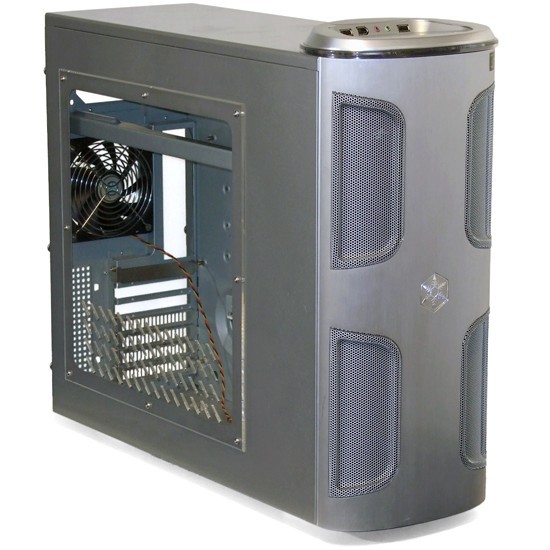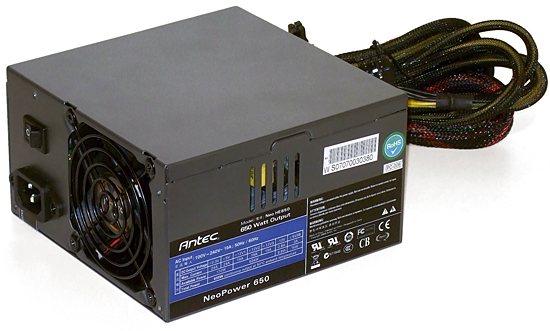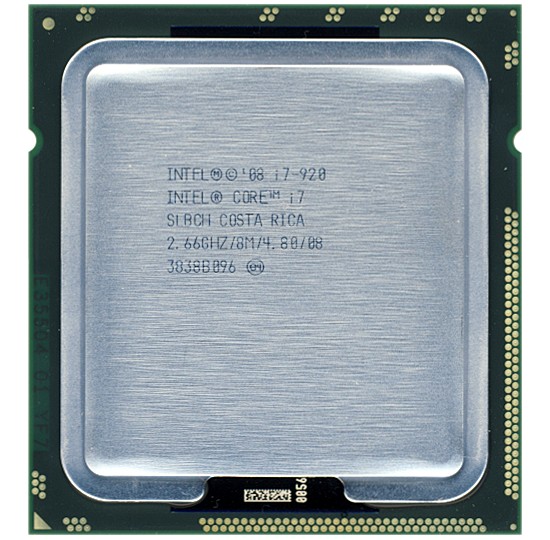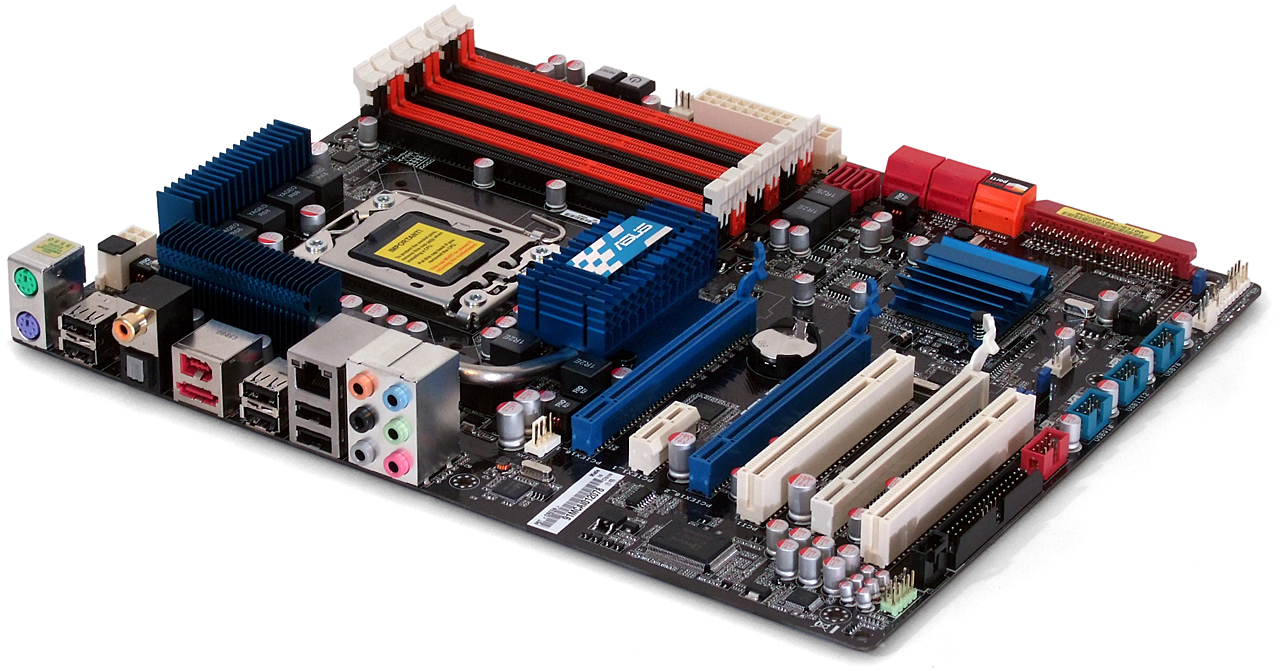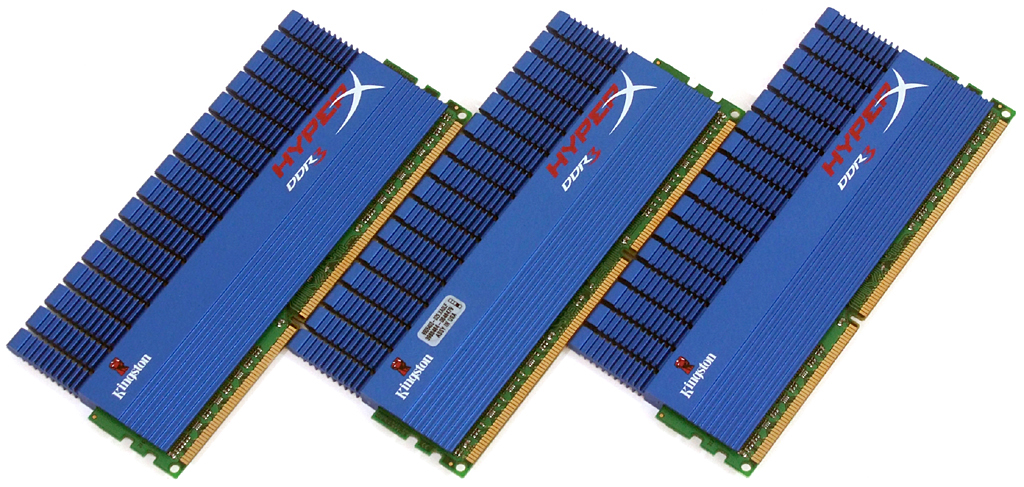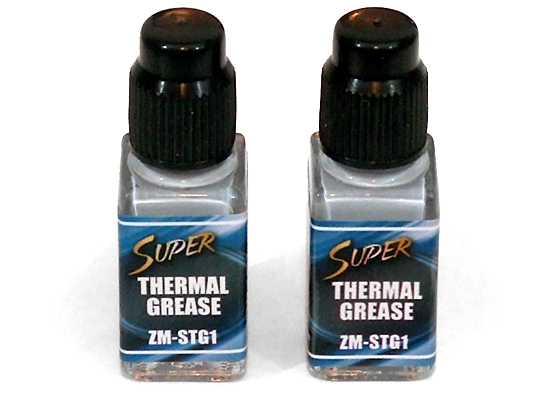Small Water Versus Big Air, Part 3: Cooling Questions Answered
Test Hardware
We wanted a case and power supply that could meet the requirements of a typical performance system. While many readers voice a preference for cases that have power supplies at the bottom and huge fans on the side or top, most real-world systems use the classic mid-tower layout. Silverstone’s KL03 is almost perfect for this task.
While high-capacity power supplies are at the top of many buyers’ wish lists, real-world budgets force the majority to settle for somewhat less. A fairly solid mid-capacity unit, Antec’s NeoPower 650 is the closest thing we could find to a typical performance-system power unit.
With typical ventilation addressed, it was time to add an atypical thermal load to see just how well these coolers could perform with no other optimizations. An overclocked LGA 1366-based processor would do the trick nicely, and our retail-boxed version was already installed in our most frequently-used motherboard.
Overclocked to 3.8 GHz at 1.366V and completely loaded with eight threads of Prime95, Intel’s Core i7-920 converts over 250W of energy to heat, as measured in various System Builder Marathon articles. That’s enough to tax nearly any moderately-priced cooling system.
Asus’ P6T motherboard keeps our moderate overclock stable at a moderate cost.
Kingston’s DDR3-2000 was chosen for convenience since it had already been installed in the P6T motherboard. Though this DRAM has proven exceptionally cable throughout many X58 motherboard comparisons, its overclocking capabilities were completely unnecessary for our DDR3-1600 CAS 8-8-8-24 settings.
Our final equalizer is the use of a single thermal compound to test all of the coolers. Zalman has offered enough ZM-STG1 thermal grease so that every North American reviewer on Tom’s Hardware staff has two bottles.
Get Tom's Hardware's best news and in-depth reviews, straight to your inbox.
Current page: Test Hardware
Prev Page The Equalizer(s) Next Page Cogage True Spirit Fan Configurations-
Annisman Ditched my Domino A.L.C. for a Xigmatek Thor's Hammer with 2 X Scythe fans. Strapped it on a Core i7 920, bumped it to 4.0Ghz and never looked back.Reply -
burnley14 Interesting. This is good to know for a future build, since cheap water cooling was always a temptation for me.Reply -
tkgclimb I was looking at water, then I decided if I really want to do this I'm going to have to spend at least 200 if i want a good, effective, upgradeable system. So I'm going to get the megahalem or the thermalright TRUE extreme. and stay with some sick air.Reply -
rpmrush Air is still a better value unless you value noise or lack there of.Reply
Water offers lower noise @ a slightly less extreme overclock, but who runs 4.0Ghz plus everyday. -
apache_lives still using my old thermaltake big typhoon with a few mods - sealed the gaps on the sides for more air pressure and using a 12cm "thick" fan from a dell tower (crazy) and the same type fan to extract air - works a treat :DReply
kinda proves that when your going water cooling, do it PROPERLY not a pre made kit
if i was to do water cooling, i would go all the way with a modded car radiator, drum for a water sump and a few powerful decent sized pumps to start off with to keep everything sweet, none of this "barely better then stock" bs. -
The corsair h50 is NOT a water cooling solution. Not even close. At best, call it an "optimized" air cooler. The only situation where you would want one is if you need to install a cooler in a tight space. Otherwise, it's higher cost really ruins any value it has.Reply
-
The_Blood_Raven Get a Swiftech H220 in there and it will beat the air coolers pretty well, besides that there are no out of the box water cooling setups that can actually beat high end air coolers by anything meaningful.Reply
Good article though, your best articles are when you take the time to answer these odd questions that are commonly asked by the enthusiast. -
Onus As many times as I see bottom-PSU cases like the Antec 300 recommended in builds in the Forum, the lingering question for me becomes, "Suppose I do have a bottom-psu top-panel-fan case. Would that make a difference?" Or, is there ANY situation where the cooling performance of this type of liquid cooler is actually superior to a big air cooler?Reply -
skora Thanks for listening to the feedback and doing follow ups like this TS. Really gives the community a reason to become involved knowing our unanswered questions get addressed.Reply
